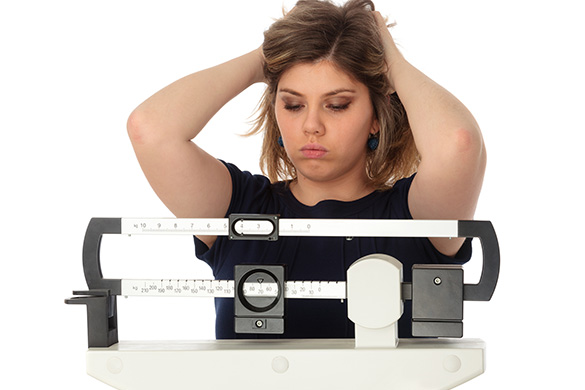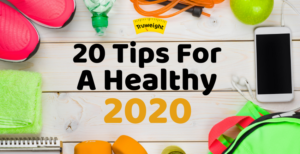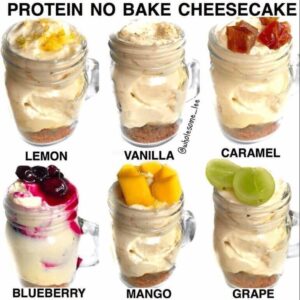This isn’t going to go the way that you think it is, because the way YOU define a plateau probably isn’t even actually a plateau!
Most people will step on the scale and see the weight stay the same or go up after only three days of weighing themselves only to freak out and say, “oh my god, oh my god, I’m in a plateau!”
Defining A Plateau
Too many people use the scale as their only form of progress and because of that anytime it’s not continuously decreasing they freak out and think they’re doing something wrong. When in reality they just haven’t been patient enough.
I’m just going to summarize it quickly. The scale is NOT supposed to drop every single day that you are on a diet. It SHOULD drop overtime on a weekly average basis but on a day-to-day basis, it is very normal for it to fluctuate up and down. In fact, you should EXPECT it to fluctuate up and down!
When facing a potential plateau how do you know if you’re actually in a plateau?
It’s important to understand that your goal isn’t weight loss. Your real goal is to become a smaller person. You want to lose fat, you want to become smaller, you want to fit into smaller clothes, and you want to not look as big.
The scale doesn’t always tell you whether or not you’re becoming a smaller person.
Before you are quick to judge that you’re in a plateau you need to verify a few things first.
How has your scale weight fluctuated over the last two weeks?
You always need to wait at least a week, ideally two weeks, to officially declare that you are in a plateau. The reason being your body is pretty resistant to letting go of weight. So it’s going to do its best to hold on to the weight for as long as it can before letting go. This doesn’t mean you haven’t been losing fat, it just means you haven’t been losing weight.
Your body will be letting go of fat weight and replacing it with water weight. So on the scale, it looks the same, or relatively close to it. Over time, once it feels safe and ready to let go of that water weight, it will drop on the scale all at once. But you need to give it time for it to do that. You need to stick through it for a little bit before changing random things around.
So you’re in a plateau if:
- you’ve never hit a new low weight over a two week period
- your weekly average weight is pretty much the same for a two week period
- you haven’t hit a lower high over a two week period
If you find that not all of those are true, then you haven’t hit a plateau. You can keep moving forward with your plan because you’re still making progress.
If those are true then you’ve hit a weight loss plateau but that doesn’t mean you’ve hit a fat loss plateau!
From there, it would be best to check your tape measurements or progress pictures if you have them.
This is especially important if you are weightlifting alongside dieting. Odds are you could be gaining muscle at the same time that you’re losing fat. This leads to no weight change on the scale but your body is still changing and becoming smaller.
You’re NOT in a plateau if:
- your weekly average weigh-in is changing
- your lowest low weight is lower
- your average weight is lower
- your highest high weight is lower
- your progress pictures show that you’re smaller
- your measurements have gone down then
If ANY of these are happening, then you’re not in a plateau and can continue doing the same plan that you have been doing because it’s working!
There’s no reason to change something that’s already working. Having all of this data is incredibly helpful because it helps you make an informed decision as opposed to randomly guessing what to do next. Or freaking out about the scale staying the same for three days.
If you went through this process and verified that you are in fact in a plateau then you can move forward.
What Really Happens When You’ve Plateaued…
More often than not it isn’t that the strategy is off but your execution of the strategy is off. You need to verify that you’ve been consistently hitting your macros over that same two-week time frame.
Sometimes if you’ve been dieting for a while and you hit a plateau you just slip up for a few days without even realizing it. Cutting more calories from your nutrition goal doesn’t negate your lack of execution of the original goal.
Make sure that you’re hitting those
goals first. Verify that you’re eating
the calories that you say you’re eating. Verify that you’re hitting the macros you say you’re hitting.
Once you’ve verified that you have hit your nutrition goals at least 90% of the time (which is 11 out of 14 days) then you can go on to the next step.
Once you’ve verified that you’ve hit your goals, we need to verify that you’ve been measuring accurately.
If you’re just randomly logging things or have just been guesstimating your food intake. Switching to more accurately measuring and logging your food can make a huge difference.
In fact,
this research report found that most people underestimate how much they’re eating by as much as 50% (!!!). That means if you think you’re eating 1500 calories and you’re not measuring it accurately you could really be eating as much as 2 300 calories! Taking the time to switch from guesstimating how much food
you’re having and actually measuring it with a food scale, measuring cups, and measuring spoons will help you be more accurate with your calorie counting and break through your plateau.
The Silent Fat Loss Killer
I call this the silent killer of fat loss because a lot of people don’t track it while dieting. As a result burn way fewer calories than they were burning
pre-dieting.
The silent killer is your NEAT Activity, which is best measured by the number of steps you take a day.
If you’re not tracking this number, buy a step tracker ASAP and start being aware of how much you move every single day. Ideally, you want to make sure that your steps are anywhere between 7,000 – 12,000 steps a day.
Even if you train two hours a day five days a week it isn’t going to replace 160 hours of inactivity the rest of the week.
If You’ve Done All Of That, Here’s What To Change
If you verified that:
- you’re not making any physical progress (weight, inches, pics)
- you have been hitting your goals
- you’ve been measuring your food accurately
- you’ve been hitting your steps every single day
Then you have earned the right to actually adjust the plan that you’ve been following.
There are two major things that you would adjust depending on your circumstance. Neither is better than the other, it just depends on your current situation and what you think you would be able to do long term.
Calorie Reduction
If you’re already in a deficit you can reduce your calorie intake by 5-10%.
It seems inconsequential but it might be just enough for you to move the needle and break through that plateau. It’s important that you also reduce your calorie intake from carbs
and fat. You want to maintain a high protein number while dieting.
If you’re already eating pretty low
calories and you don’t want to change
that then you can opt for the second adjustment.
Increasing Activity
You can increase intake in 2 ways. First is increasing the number of steps
you take per day. If you’re currently getting 7,000 steps per day, increasing to 8,000 steps per day is an extra 200 to 300 calories burned on a daily basis.
If you can’t fit in more walking in
the day or you’re already getting 10,000+ steps a day or you’re already at a pretty low-calorie number and you don’t want to reduce it just yet you can increase your total training volume.
Adding in extra exercises or even adding a training day if you’re only training three or four days a week.
If you don’t want to increase training volume you can incorporate and add LISS or MISS cardio. You can add anywhere between 30 to 70 minutes per week, whatever is comfortable for you at this point in time.
Any of these will increase your caloric
expenditure and help you break through a plateau.
Summary
Before trying to change anything with your diet or your training make sure that you’re actually in a plateau first.
This doesn’t mean that you’ve been stuck at the same weight for three days in a row. It means that your weekly average weigh-in hasn’t changed for a two-week period and you don’t see any progress with your
progress pictures or body measurements.
Then verify that you’re actually hitting the goals that you set for yourself. Are you hitting your calorie markers? Are you hitting your protein markers? Are you getting the steps that you say you’re getting? Are you measuring these things accurately or are you guesstimating them?
If you can verify that you have been hitting the goals that you set for yourself then you can look to change the goals and break through the plateau. Whether that’s through an increase in activity or reducing your
calorie intake by five to ten percent
from carbs or fat.







